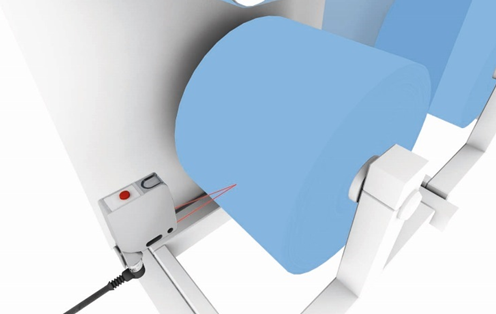Clear or transparent sensing targets can be a challenge but not an insurmountable one. Applications can detect or measure the amount of clear or transparent film on a roll or the level of a clear or transparent media, either liquid or solid. The question for these applications becomes, do I use light or sound as a solution?

In an application that requires the measurement of the diameter of a roll of clear labels, there are a number of factors that need to be considered. Are the labels and the backing clear? Will the label transparency and the background transparency change? Will the labels have printing on them? All of these possibilities will affect which sensor should be used. Users should also ask how accurate or how much resolution is required.
Faced with this application, using ultrasonic sensors may be a better choice because of their ability to see targets regardless of color, possible printing on the label, transparency and surface texture or sheen. Some or all of these variables could affect the performance of a photoelectric sensor.
Ultrasonic sensors emit a burst of short high frequency sound waves that propagate in a cone shape towards the target. When the sound waves strike the target, they are bounced back to the sensor. The sensor then calculates the distance based on the time span from when the sound was emitted until the sound was received.
In some instances, and depending on the resolution required, a time of flight sensor may solve the above application. Time of Flight (TOF) sensors emit a pulsed light toward the target object. The light is then reflected back to the receiver. The elapsed time it takes for the light to return to the receiver is measured, thus determining the distance to the target. In this case, the surface finish and transparency may not be an issue.
Imagine trying to detect a clear piece of plastic going over a roll. The photoelectric sensor could detect it either in a diffuse mode or with a retroreflective sensor designed for clear glass detection. But what if the plastic characteristics can change frequently or if the surface flutters. Again, the ultrasonic sensor may be a better choice and also may not require set up any time the material changes.
So what’s the best solution? In the end, test the application with the worst case scenario. A wide variety of sensors are available to solve these difficult applications, including photoelectric or ultrasonic. Both sensors have continuous analog and discrete outs. For more information visit www.balluff.com.

